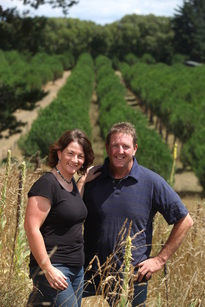

Brevel Enters the Chlorella Market With Purallis
So here’s the twist you didn’t see coming: chlorella just got an upgrade, and it didn’t come from the usual pond-grown suspects. Israeli innovator Brevel has quietly slipped into the microalgae game with Purallis, a lab-lit, illuminated-fermentation chlorella not behaving like the swampy, iron-heavy stuff the category has been stuck with for decades.
11 hours ago1 min read


Plant-Based Yogurt Surges as ANZ Brands Feel the Squeeze
Global plant-based yogurt is quietly climbing at a 9.2% annual growth, driven by gut-health hype, dairy fatigue, and the rise of “clean comfort foods” that look and behave like the real thing without the lactose hangover. And while oat and almond yogurts are having their moment, it’s coconut yogurt that keeps showing up in shopping baskets because consumers trust the texture, thick, creamy, reliable.
12 hours ago1 min read


Top Food Trends For 2026 - Protein Reigns
“Top Food Trends for 2026 – Protein Reigns” still holds, but the protein story now lives inside a bigger behavioural shift where people want options that fit their day, fit their wallet, and fit their mental bandwidth. Single-serve meals, snack-ready bites, and genuinely useful plant-forward proteins are now the scaffolding of everyday eating.
3 days ago1 min read


Why Global Blueberry Demand Keeps Climbing
Global blueberry demand is no longer a trend, it’s a structural shift. The market is now worth USD $10.8–$11.5 billion, heading toward $17–19 billion by 2030, and the numbers explain the momentum. In the US, per-capita consumption has shot past 1.3kg a year, backed by soaring imports up 300% over the last decade. Shoppers aren’t dabbling, they’re committing.
3 days ago1 min read


New Zealand Turns Methane Into Protein
If the world needed a plot twist in the protein story, this is it - Methane into proptein - researchers at the University of Canterbury and the New Zealand Institute of Bioeconomy Science are showing that methane, yes, methane, can be converted into high-quality protein using microalgae and methanotrophic bacteria. It’s early-stage science, but the implications land squarely in future-food territory.
3 days ago1 min read


Is It Time For Zespri To Think The Unthinkable in China?
Did you know China is now sitting on 10,000–15,000 hectares of G3-type gold kiwifruit, all descended from stolen New Zealand genetics? Most shoppers haven’t a clue. They just see sweet, gold-fleshed fruit and buy whatever looks good and a huge chunk of that “gold kiwi” is Chinese, not Zespri. Quiet, massive, and maturing fast, China’s shadow G3 world is now too big to ignore.
3 days ago1 min read


New Air India Menu Quietly Puts Plant-Based on Global Display
Air India just pulled a move most airlines keep avoiding. by making plant-based the norm, not novel. Forget the token vegan meal baked in 1992, this is a full cabin rollout of vegan, gluten-free, allergen-friendly and low-oil dishes designed to feel like real food rather than “special meal” purgatory. Khichdi, stuffed paranthas, curated veg mains, it’s the first time an old-school flag carrier has presented plant-based eating as part of modern Indian aviation rather than a fr
6 days ago1 min read


Veganburger vs Vegaworst Funny How EU Consumers Know The Difference
Let’s call it like it is, when almost 21,000 Dutch consumers were asked whether terms like vegaworst or veganburger were confusing, a thumping 96% knew exactly what they meant. That alone pulls the rug out from under claims EU shoppers can’t tell a plant-based sausage from an animal one. The data couldn’t be clearer, consumers aren’t confused, regulators are.
6 days ago1 min read





















Comments